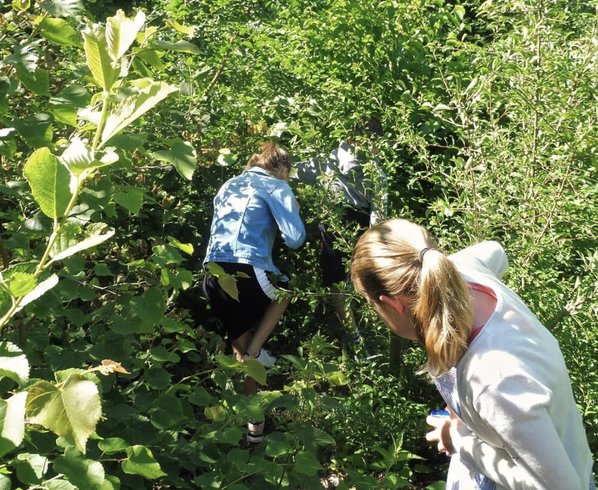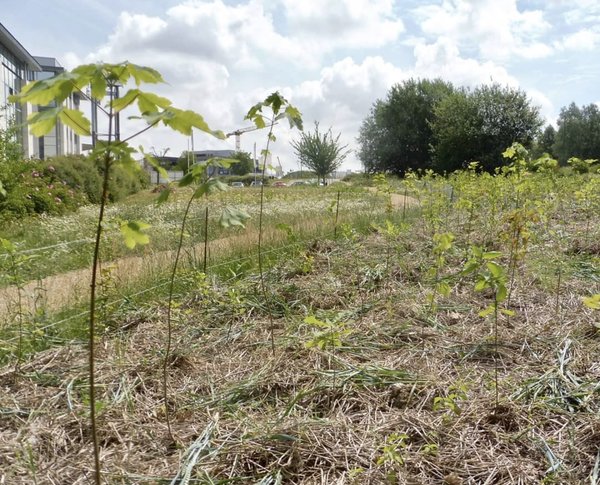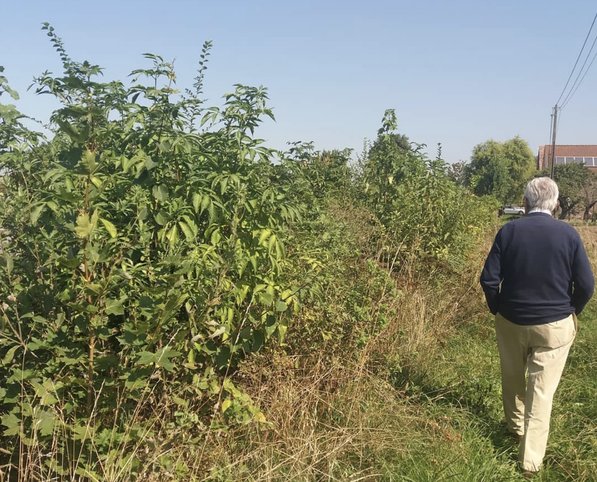
In a bid to increase biodiversity within cities and to help fight the climate crisis, micro forests, and variations of green space have been popping up over the years in urban areas globally. Throughout Europe as part of a movement to restore biodiversity, tiny dense forests have sprung up. These forests take planning and are environmentally beneficial for reducing greenhouse gases and increasing biodiversity from small spaces.
These micro forests can be as small as a tennis court and are usually in schoolyards or alongside roads.
The method for micro forests has been adapted from the 1970s originals by Akira Miyawaki, a Japanese botanist who observed that trees around Japan’s Buddhist and Shinto shrines were mostly native species. He saw the plants were well-adapted to the climate and soil of the islands of Japan, and most importantly self-sufficient. From his observations, he started a movement toward the development of micro forests. Over the decades there have been over 1,000 Miyawaki inspired forests developed in Japan, Malaysia, and other places.

What is special about the Miyawaki method is the forests have the potential to grow 10 times faster, are 30 times denser, and 100 times more biodiverse than conventional forest methods. This is done by planting saplings closer together, three per 11 square feet, with a wide variety of species of 30 or more to recreate the layers of a natural forest.
While single-species plantations are not as effective as ecosystems at storing carbon, forests store an estimate of 40 times more carbon according to scientists. In correlation with efforts to mitigate climate change in cost-effective ways, micro forests are being adopted globally. Organizations like the Tiny Forest initiative in Holland and Urban Forests in France and Belgium have adapted to use the Miyawaki method. A conservation group, VN Nature Education in the Netherlands, has helped households and cities to plant 100 Miyawaki-style forests since 2015. By 2022, they plan to double the number and are working on similar efforts in a dozen other countries.

Another example of using land within an urban environment was when Belgian naturalist, Nicolas de Brabandère and founder of Urban Forests started planting Miyawaki-style forests in 2016. The original Urban Forests plantation is now ten feet tall. It was all planted by volunteers and local authorities with 300 saplings on a grassy strip of land near a road.
Why this is important?
In 2015, as part of The Paris Climate Agreement, many nations around the world committed to helping mitigate the damage caused by climate change. A research article published by National Acadamy of Sciences of the United States of America explores some Natural Climate Solutions. The reduction of net emissions caused by anthropogenic factors or pollutants caused by humans can be reduced through how land is used by approximately 20%. The reduction can be helped through how plants, soils, grasslands, and forests are used.
The research discusses;
“Most nations recently agreed to hold global average temperature rise to well below 2°C. We examine how much climate mitigation nature can contribute to this goal with a comprehensive analysis of “natural climate solutions” (NCS): 20 conservation, restoration, and/or improved land management actions that increase carbon storage and/or avoid greenhouse gas emissions across global forests, wetlands, grasslands, and agricultural lands. We show that NCS can provide over one-third of the cost-effective climate mitigation needed between now and 2030 to stabilize warming to below 2°C. Alongside aggressive fossil fuel emissions reductions, NCS offer a powerful set of options for nations to deliver on the Paris Climate Agreement while improving soil productivity, cleaning our air and water, and maintaining biodiversity.”
They concluded;
“Thus, ecosystems have the potential for large additional climate mitigation by combining enhanced land sinks with reduced emissions.”
A call for the protection or management of half of the earth’s surface by Eric Dinerstein, a wildlife scientist who co-authored another recent paper suggests what could help to avoid catastrophic climate change.
“So this could be another aspect for suburban and urban areas, to create wildlife corridors through contiguous ribbons of mini-forest.”
— Eric Dinerstein
The idea of green space is not a new idea, but the embracing of micro forests seems to be a trend that could do so many good things. Many cities around the world may start adopting this micro forest phenomenon in order to combat climate change and increase biodiversity.